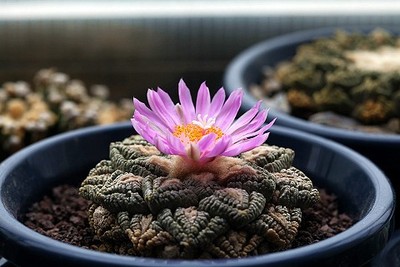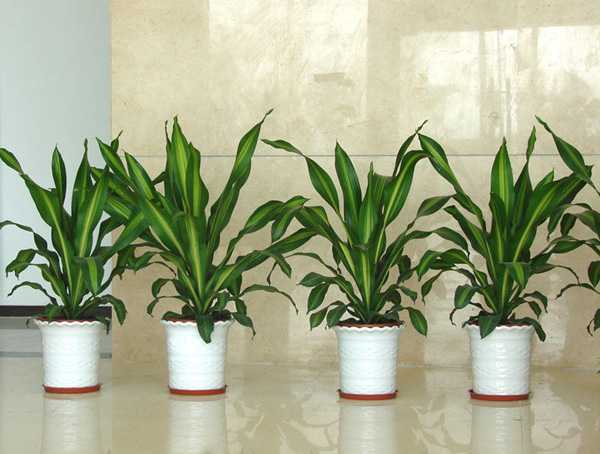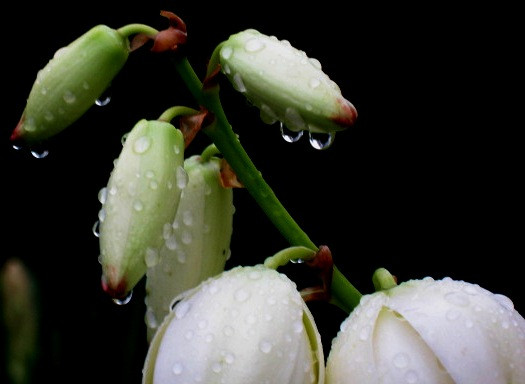Picture of tortoise peony how to raise tortoise shell peony
What does a peony look like in armor? Tortoise shell peony is native to southwestern Texas and northern Mexico. It likes adequate and soft sunshine, air circulation, and requires a certain degree of air humidity in the cultivation site. The growing season should be fully watered, but continuous stagnant water in the basin should be avoided, and the compound liquid fertilizer of "low nitrogen and high phosphorus and potassium" should be applied every 15 days or so to make the plant blossom more. Summer needs proper sunshade, if the light is too strong, it is not only easy to burn the sphere, but also grow slowly. Put it in a bright place in winter to keep the basin soil dry and can withstand a low temperature of 5 ℃. In cultivation, the pot should be changed once a year to promote plant growth and flourish. The basin soil requires drainage, good air permeability and sandy soil containing appropriate amount of calcareous soil. Because this species has thick straight roots, it is suitable to be planted in a deeper pot. Tortoise shell peony, scientific name: Ariocarpusfissura-tus, is a rare and endangered species of peony of cactus family. Globose plants solitary or tufted, cushion-like growth, a single sphere 10 cm to 15 cm in diameter, flat at the top, covered with thick white or yellowish-white tomentose. The epidermis has thick and hard triangular verrucous process, the surface of the verrucous process is grayish green, to brownish green, wrinkled into irregular grooves, a longitudinal groove in the middle extends to the armpit of warts, and has short woolly hair. Flowers terminal, bell-shaped, pink, 3.5 cm to 4 cm long, very eye-catching, and constant flowers blooming at the same time. Next, the editor of the net will introduce the tortoise shell peony to you.

Picture of tortoise peony how to raise tortoise shell peony
The reproduction of tortoise shell peony is very difficult, and it can be grafted by sowing or picking young bulbs. Because the fruit ripening period of the plant is very long, and it is very difficult to germinate, the germination rate is very low, and the seedling growth is very slow. The growth rate is only faster than that of tequila peony in the genus Peony. Grafting can use three-angled arrow as rootstock to accelerate growth and blossom early, but the life of grafted seedlings is very short, easy to aging, not easy to cultivate, and it is very difficult for peony to fall to the ground, it is not easy to take root, and the mortality rate is very high.
Tortoise shell peony has a strange shape, very much like a stone carving handicraft, known as "living stone", flowering many and delicate, is a very beautiful small indoor potted flowers.
Sowing method of tortoise shell peony
Temperature: like warmth, can withstand 5 ℃ low temperature. When the water is cut off in winter, it can withstand the low temperature below 0 ℃.
Light: like sufficient and soft sunlight, shade the bright parts of the room properly in summer.
Moisture: water should be fully watered during the growing season, but there should be continuous stagnant water in the basin.
Soil: in the wild, all plants of the genus Peony grow in calcareous soil. In most cases, the main component of calcareous material is calcium carbonate. However, while there is a certain amount of A. kotschoubeyanus growing on limestone, there are also a large number of this variety growing in gypsum soil (mainly calcium sulfate). Limestone fragments are usually mixed with soils that contain hard sandy clay, large amounts of minerals and low moisture. In the native place, there are often a large number of plants of this genus in areas with good permeability and fragile porous limestone. Therefore, it can be inferred that soluble calcium and other minerals are essential nutrients for the genus Peony.
Air humidity: the cultivation site requires good ventilation and a certain amount of air humidity.
Fertilization: the compound liquid fertilizer with low nitrogen and high phosphorus and potassium was applied every 15 or so.
Root trimming treatment of tortoise shell peony
1, the purchase time to choose early spring and early autumn, because the supply is sufficient, a wide range of options; tortoise shell peony is about to enter the recovery growth stage, the probability of hanging is small; it is relatively cheap.
2. Carry on the physical examination to the tortoise shell peony when selecting. Rotten, worms, wounds (digging, holes) are the main checkpoints. Judge whether it will affect future growth, and at the same time judge whether it is fresh and dynamic.
3. Clean up. After starting, the tortoise shell peony is cleaned as a whole, mainly for mud, withered and damaged warts.
4. Thoroughly trim the root of tortoise shell peony after drying, and do it quickly, ruthlessly and accurately. Clean up the old wounds and rotten places. 5. Spray fungicides. Use two or more fungicides, do not need to add water, powder can be applied, because the wound formed after root trimming should avoid water.
6. Hang in the shade. It takes a few weeks (at least a month) so that the wound can fully heal. If it is rotten, or if the weather is cold or rainy, the pot will have to be put off)
7. Dry soil planting, the reasons for dry soil planting:
1) after pruning the root of tortoise shell peony, let the root heal completely in the small environment of soil species.
2) let the tortoise shell peony adapt to the new cultivation substrate, just like a person who has been locked up in a coal mine for a few days and cannot open his eyes or eat immediately after being rescued.
8. After two weeks of dry planting, if it goes well, it should be more than a month and a half away from the correct purchase time. At this time, the climate should enter the growing season of tortoise shell peony (almost after the late spring cold in early spring and almost after the autumn tiger in early autumn). Watering, you can shower, watering choose sunny days.
9. After watering, put the napkin on the soil and dry it in the sun. The function is to improve the small environment of the soil, which is conducive to rooting.
10. Start normal maintenance.
For a period of time after planting, pay attention to the observation and put it in the sun. On the outside of the two warts, whether there is a bulge. If so, it means that it has been rooted, or has entered the recovery stage. If not, continue to observe for a period of time, there is no recovery, pull out to check the root and finishing, to see if the wound worsened, if so, continue to trim.
Brief introduction of tortoise shell peony
Tortoise shell peony, a plant of the genus Peony of the cactus family, mainly distributed in Texas and Mexico in the United States.
Tortoise shell peony is native to southwestern Texas and northern Mexico. It likes adequate and soft sunshine, air circulation, and requires a certain degree of air humidity in the cultivation site. The growing season should be fully watered, but continuous stagnant water in the basin should be avoided, and the compound liquid fertilizer of "low nitrogen and high phosphorus and potassium" should be applied every 15 days or so to make the plant blossom more. Summer needs proper sunshade, if the light is too strong, it is not only easy to burn the sphere, but also grow slowly. Put it in a bright place in winter to keep the basin soil dry and can withstand a low temperature of 5 ℃. In cultivation, the pot should be changed once a year to promote plant growth and flourish. The basin soil requires drainage, good air permeability and sandy soil containing appropriate amount of calcareous soil. Because this species has thick straight roots, it is suitable to be planted in a deeper pot.
How to raise tortoise shell peony
Tortoise shell peony is a very beautiful small indoor potted flower, is a cactus family rock peony plant, mainly distributed in Texas and Mexico, the United States, strange shape, enjoy the "giant panda in the plant" reputation, also known as the living rock, many and delicate flowers, high ornamental value, let's take a look at the breeding methods of tortoise shell peony!
Morphological characteristics of tortoise shell peony
Tortoise peony globular plants solitary or tufted, cushion-like growth, a single sphere 10 cm to 15 cm in diameter, flat at the top, covered with thick white or yellowish-white tomentose. The epidermis has thick and hard triangular verrucous process, the surface of the verrucous process is grayish green, to brownish green, wrinkled into irregular grooves, a longitudinal groove in the middle extends to the armpit of warts, and has short woolly hair. Flowers terminal, bell-shaped, pink, 3.5 cm to 4 cm long, very eye-catching, and constant flowers blooming at the same time.
Propagation methods of tortoise shell peony
The reproduction of tortoise shell peony is very difficult, and it can be grafted by sowing or picking young bulbs. Because the fruit ripening period of the plant is very long and germination is very difficult, the germination rate is very low and the seedling growth is very slow. The growth rate is only faster than that of tequila peony in the genus Peony. Grafting can use three-angled arrow as rootstock to accelerate growth and blossom early, but the life of grafted seedlings is very short, easy to aging, not easy to cultivate, and it is very difficult for peony to fall to the ground, it is not easy to take root, and the mortality rate is very high.
Culture methods of tortoise shell peony
1. Selection of pots: tortoise shell peonies have thick straight roots and should be planted in deeper pots.
2. Soil: tortoise shell peony basin soil requires drainage, good air permeability, and contains appropriate amount of calcareous sandy soil.
3. Humidity: tortoise shell peony likes the environment of air circulation, which requires a certain amount of air humidity in the cultivation place.
4. Watering: tortoise shell peony should be fully watered during the growing season, but there should be continuous stagnant water in the basin.
5. Fertilization: tortoise peony was applied with compound liquid fertilizer of "low nitrogen and high phosphorus and potassium" about every 15 days to make the plant blossom more.
6. Sunshade: tortoise shell peony needs proper shading in summer. If the light is too strong, it is not only easy to burn the sphere, but also grows slowly.
7. Overwintering: tortoise shell peony is placed in a bright place indoors in winter to keep the basin soil dry and can withstand a low temperature of 5 ℃.
8. Change the basin: in the cultivation of tortoise shell peony, the pot should be changed once a year to promote plant growth and prosperity.
Hinton peony / tortoise shell peony map: how to raise Hinton peony / tortoise shell peony / how to propagate Cactaceae peony Chinese scientific name: Hinton peony, tortoise shell peony Latin name: Ariocarpus bravoanus subsp. Hintonii (Stuppy & N.P.Taylor) E.F.Anderson & W.A.Fitz Maur.1998 family: brief introduction of peony genus of cactus family: Hinton peony is a succulent plant of peony genus of cactus family, habitat: USA-Texas: Mexico-Chihuahua, Coavera Zaragoza, Durango flower: pink, red. Family name: Cactaceae genus name: Ariocarpus Latin name: Ariocarpus bravoanus subsp. Hintonii (Stuppy & N.P.Taylor) E.F.Anderson & W.A.Fitz Maur.1998 Chinese name: Hinton peony, tortoise shell peony Korean Japanese name: synonym: Ariocarpus fissuratus var. Hintonii W. Stuppy & N. P. Taylor 1989Ariocarpus bravoanus subsp. Hintonii (Stuppy & N.P. Taylor) E.F. Anderson & Fitz Maurice 1997 habitats: USA-Texas: Mexico-Chihuahua, Coavera Zaragoza, Durango Flowers: pink, Red habits: habitat is mostly fragments of weathered limestone, gravel is suitable for breeding. According to individual watering habits, the proportion of sand and gravel, spring, summer and autumn is the growing season, can not be exposed to the sun, like strong scattered light.
- Prev

Thread iron breeding methods and precautions Thread iron pictures
Why is it called that? It may have something to do with its shape. If you are a newly renovated house, it is also good to put a pot. Alias: spiral iron, willow iron, Philippine iron tree, leaf iron, twisted iron
- Next

The culture method of sword orchid A picture of sword orchid
It's nice to grow potted plants indoors. Sword orchid, the scientific name is Gladiolus. It's not an orchid. It is a bulbous plant of Iridaceae. Sword orchid plant height 80-170 cm, green leaves alternate, arranged in two rows, corm oblate or ovoid, with annular nodes. Leaves 6-9, sword-shaped. It and the rose
Related
- Fuxing push coffee new agricultural production and marketing class: lack of small-scale processing plants
- Jujube rice field leisure farm deep ploughing Yilan for five years to create a space for organic food and play
- Nongyu Farm-A trial of organic papaya for brave women with advanced technology
- Four points for attention in the prevention and control of diseases and insect pests of edible fungi
- How to add nutrient solution to Edible Fungi
- Is there any good way to control edible fungus mites?
- Open Inoculation Technology of Edible Fungi
- Is there any clever way to use fertilizer for edible fungus in winter?
- What agents are used to kill the pathogens of edible fungi in the mushroom shed?
- Rapid drying of Edible Fungi

